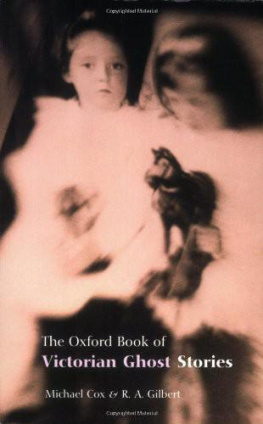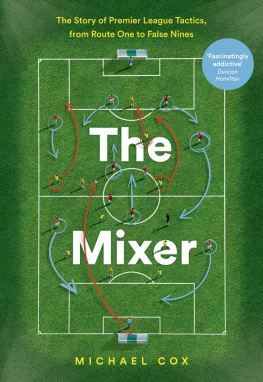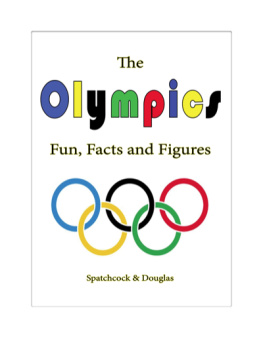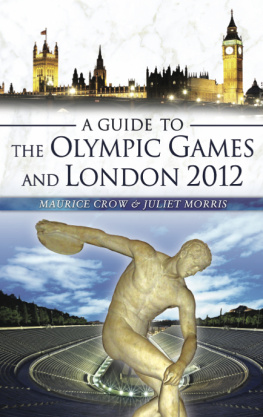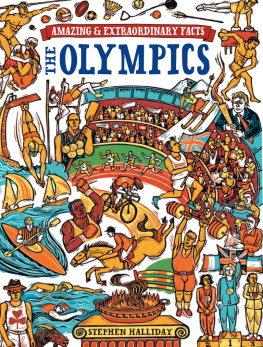
First Published 2012 by
A & C Black
Bloomsbury Publishing Plc
50 Bedford Square, London, WC1B 3DP
www.bloomsbury.com
This electronic edition published in 2012 by Bloomsbury Publishing Plc
Text copyright 2012 Michael Cox
Illustrations copyright 2012 Steve May
Copyright 2012 A & C Black
eISBN 978-1-4081-9319-8 (e-book)
All rights reserved
You may not copy, distribute, transmit, reproduce or otherwise make available this publication (or any part of it) in any form, or by any means (including without limitation electronic, digital, optical, mechanical, photocopying, printing, recording or otherwise), without the prior written permission of the publisher. Any person who does any unauthorised act in relation to this publication may be liable to criminal prosecution and civil claims for damages
The rights of Michael Cox and Steve May to be identified as the author and illustrator of this work have been asserted by them in accordance with the Copyrights, Designs and Patents Act 1988.
A CIP catalogue for this book is available from the British Library.
All Internet addresses given in this book were correct at the time of going to press. The authors and publishers regret any inconvenience caused if addresses have changed or if websites have ceased to exist, but can accept no responsibility for any such changes.
Visit www.bloomsbury.com to find out more about our authors and their books
You will find extracts, author interviews, author events and you can sign up for newsletters to be the first to hear about our latest releases and special offers
IMPORTANT:
When throwing heavy (or sharp) things around, (or yourself for that matter), it is essential that you follow proper safety precautions, and receive proper supervision and instructions from a trained professional or teacher.

W e all know that the Olympics are an awe-inspiring sporting spectacle in which world-class athletes battle for glory. But did you know that theyre also the setting for absolutely hundreds of weird, wonderful and wildly hilarious moments! In the awesomely agile, ferociously fleet-footed and superbly supple pages of this book, you will discover

But thats not all!
Find out how to shine at show-jumping, win at wrestling, triumph in the triathlon, swim like a superstar and perform an Olympic medal-winning javelin throw, but NOT (for health and safety reasons), how to do these things all at once! Discover if youve got what it takes to be an Olympic superstar, by completing two incredibly insightful questionnaires, and find out how to incorporate your Olympic training into your daily life. And if all thats not enough to keep you on the edge of your grandstand seat, there are also exciting instructions on how to create your own DIY Olympics.
IMPORTANT SAFETY NOTE: As you will notice quite quickly, a lot of the instructions in this book are somewhere between totally daft and certifiably insane. In other words they are not meant to be taken seriously. Therefore if you
a) get your head stuck in the ceiling doing a fliffus on your trampoline
b) strangle yourself whilst trying to perform an Olympic medal winning hammer throw using a frozen chicken and piece of string
c) kebab an entire queue of people at a bus stop during your javelin practice
or do anything that is detrimental to your general health and most squishy bodily particulates, neither Michael Cox, his publishers, or his Aunty Sandra, can be held responsible / in prison / to ransom / over a barrel.
So what are you waiting for! Lace up your trainers, slip on your shorts, slap on some sun cream and strap on your heart monitor! Then its
ON YOUR MARKS GET SET GO!
T he first ancient Olympic Games took place in Greece in 776 BC, (thats almost 3,000 years ago). They were held in the valley of Olympia, (now theres a coincidence) and happened every four years.
The stroppy Greek city-states, who were normally busy having wars and what-not, always declared a truce during the games. The events included chariot races, boxing, wrestling and marathons, and the competitors always took part in the nude, (in which case, where did the marathon runners keep their iPods?).
Partway through the games, dozens of oxen were sacrificed to Zeus (the king of all the ancient Greek gods), and in an attempt to predict the outcomes of their events, Olympic athletes examined the entrails (intestines) of the slaughtered animals (yes, it takes guts to compete in the Olympics).
TORCH AND GO!
The Olympic torch, which is carried around the host nation and into the stadium at the beginning of the modern Olympics, is said to have been inspired by an ancient Greek relay race where, instead of a baton, the runners carried burning torches. The idea was to get to the end of the race before the torch went out (or set the runners legs on fire).
IF YOU VALUE HER LIFE, DONT BRING YOUR WIFE!
Y oung unmarried girls could watch the ancient Olympics, but if married women were caught attending the games they immediately became harried women, closely followed by carried women, when they were taken to the top of nearby Mount Typaion and thrown off!
However, one woman, Kallipateira, disguised herself as a chap so she could watch her son, a boxer, compete in his event. When he won, she was so chuffed that she jumped over the barrier to congratulate him but, as she did, all her clothes fell off, (the way they do) and she was revealed to be a woman.
However, in recognition of her father, three brothers, nephew and son, who were all Olympic champions, the officials let her off the being-thrown-off-a-mountain bit, (and simply rolled her down a nearby railway embankment).
A ncient Olympic Greek wrestlers covered themselves with oil and dust to make it easier for their opponents to get hold of them. Biting, tripping and eye gouging were against the rules but punching, choking and breaking your opponents fingers were all perfectly acceptable.

One ancient Olympic wrestler, Sostratus of Sikyon, (or Mr Fingertips, as he was known to his fans), regularly snapped his opponents digits to make them submit. Another ancient Greek grappler, Polydamas, was so strong that he once killed a lion with his bare hands.
On another occasion, he seized a huge bull by its foot, actually pulling off its hoof when the beast tried to escape. He also brought a fast-moving chariot to a halt simply by grabbing it with his bare hands!
In order to train for such phenomenal feats of strength, one ancient Olympic wrestler, Milo of Kroton, trained by carrying a live calf around with him every day. As the calf grew, so did his muscles, (especially his calf muscles).
BOXING CLEVER, WITH A PAINFUL BIT OF LEATHER
Instead of wearing gloves, ancient Greek boxers wrapped leather straps around their hands to protect them. The straps caused terrible damage to their opponents faces, apart from one fleet-footed fighter, the ancient Greek boxer Melankomas of Karia.
Next page

